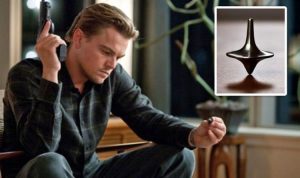#Inception #Explained #Cobb #dreaming
Welcome guys to All Social Updates. Here you can Find complete information about all the latest and important updates about every matter from all around the world. We cover News from every niche whether its big or small. You can subscribe and bookmark our website and social media handles to get the important news fastest before anyone.Follow our website allsocialupdates.com on Facebook, Instagram , Twitter for genuine and real news.
Ending Of Inception (2010) Explained- Is Cobb still dreaming?
What Happens at Inception?
Ever since Inception came out in 2010, Christopher Nolan has given fans of psychological thrillers one of the most interesting questions. So, we decided to answer the famous ending of the movie “Inception”: Is the top still moving?
Cobb is the main character in Inception. He uses a dream-sharing device to enter people’s dreams and steal valuable information. Soon, a businessman named Saito asks him to plant information instead of stealing it.
Even though the story is about an unusual subject, Christopher Nolan manages to make it intellectually stimulating and make people think. Geeks loved the phrase “dream inside a dream inside a dream,” and word spread about how complicated the whole movie was.
People were amazed at the people who came up with the plot of the story the fastest. Since then, Nolan has become a living legend.
Dom Cobb threw his spinning top to see if he was awake or still dreaming. If it keeps spinning, he is still dreaming; if he falls, he is awake. When Cobb turns around to find out what’s going on, the movie quickly ends and the focus shifts to his children, who he goes up to greet even though he still doesn’t know what’s going to happen. What does this mean, and what do you need to know about it?


Inception (2010) Ending Explained
How did Mal end up in the dream world?
Before Mal died, she married Cobb, and the two of them pursued their dreams together. Cobb feels compelled to steal because of what he knows about dreams after he dies.
How does a ladder that goes on forever work?
Stairs that go on forever are paradoxes, or logical fallacies, because they are impossible in real life. Arthur dreams of the level where he seems to be using a ladder, but Ariadne probably made the levels and ladders.
Before the dream of snow, Eams created a similar set of short cuts. Ariadne tells Cobb about them when they need a faster way to get to the fortress.
What does it do so that Hotel Dream has no pull of gravity?
Just like in real life, things that happen outside of the dream can have an effect on the dreamer. When it’s cold at night, people sometimes dream about glaciers and ice caps. When people get out of bed, they sometimes dream about falling or skydiving.
So, when the car in the higher level of the dream falls on the bridge, the people inside lose their balance, and the feeling of falling spreads in the dream, as if there is no pull of gravity in the hotel level below the car .
In a dream, however, this effect seems to only go up a level.
At the end of the movie, is Cobb still dreaming?
A Reddit user named “routlinemagic” came up with the idea that one minute in the real world equals 40 hours in the dream world. If Mal, Cobb’s wife, was right, and she was in a dream, she would have woken up in the real world and tried to wake up Leonardo’s character.
So, Leonardo’s character doesn’t have to spend the next year and a half dreaming after Mal kills himself. Finally, the idea is that Leonardo’s character does not remember the last time he saw his children. That means, he hasn’t seen them for over a year and a half and Mal has died.
From another perspective, Inception is about a father who wants to return to his children. In reality, Cobb is still dreaming, and his dreams are his new home in the final scene. This is what we get from reading the scene.
Ken Watanabe’s character, Saito, motivates him to take up a job which is a great release for his tired mind and lets him use his job and skills to create a perfect life for himself . By the end of the job at Saito, Cobb’s problems with his wife have been resolved in his dreams, and he has found his way home. The trick is that he keeps this “home” in his mind, just as he keeps other memories.


Inception (2010) Ending Explained
What can we learn from Cobb’s totem? Was it all a bad dream? Does the truth matter?
Maybe the point is that there is no direct answer. On the other hand, it’s nice to know what’s important to you.
One would think that this was done on purpose to make it almost impossible to know how the story ends, since Nolan doesn’t care if Cobb is dreaming or not. “I run to the back of the theater before anyone catches me, and the audience usually responds with a loud roar,” he said. The point is that it matters to the audience no matter what, even if it’s fiction. When you watch, it’s like a virtual reality.
Nolan seems to be the only one who can ask the question in such a way that the answer is less important than why it matters. This is a smart move. Everyone has their own point of view, and it’s comforting to know that you are neither right nor wrong. “Because I have young children, I like to think that Cobb returned to his children,” the director said in an interview several years ago. “Parents read it very differently than people who don’t have children. “The audience makes a big difference,” he said.
“The meaning of a story comes from where the words on the page meet the thoughts in the reader’s mind,” says author Philip Pullman.
This does not mean that everything is okay. Context, norms, old stories, and how something was used in the past all affect its meaning. But it’s up to us to know what we read and explain why we do things the way we do.
